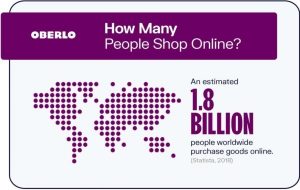Attribution Accelerator Day 4: Recency, Creative Take Center Stage
The Advertising Research Foundation’s (ARF) and Sequent Partners’ four-day “Attribution & Analytics Accelerator” conference wrapped up Thursday reminding attendees about three important principles:
-
The relative importance of creative versus media.
-
The need for media agencies to embrace “recency” in both media planning and activation.
-
The need to balance marketing investments against both long-term brand equity-building and short-term sales results.
I found it especially noteworthy that existing principles for effective marketing were referenced from gurus like Erwin Ephron, who championed “recency,” and Les Binet’ and Peter Field’s seminal work “The Long and the Short of it: Balancing Short and Long-Term Marketing Strategies.”
Ad outcomes are about all the elements of campaigns, including the impact of great creative, rather than simply just the media placement and audience — or even worse, the media spending. That media continues to be credited — or blamed for — the effectiveness of any campaign would, I am sure, neither amuse Ephron, nor Binet or Field.
These fundamentals are clearly understood and embraced by Microsoft’s Kathleen Magnuson and Analytics Partners’ Maggie Merklin, who presented “The Long Game,” which demonstrated a holistic approach to campaign planning and investment.
Their presentation was based on using marketing mix modeling (MMM) over quite different time frames. It consequently examined the balance of marketing investments between long-term brand-building and short-term sales, which echoed the importance of this theme from Day Two of this conference.
For Microsoft’s Magnuson, extending campaign reach over prolonged periods — recency — with the right creative messages, can extend “base” sales over an extended period of time.
The value of dynamic creative optimization (DCO) was highlighted by IRI’s Jennifer Pelino and Nestlé’s Drew Acierto. “Personalization of brand-planning, targeting, creative and media activation to increase return-on-ad-spending (ROAS),” is paramount for Nestle brands.
IRI helped navigate between and across household and persons data for product purchase and media usage, guided continuous test and control for creative by target sub-groups, and ran sophisticated modeling. The goal? Delivering the right ad to the right person at the right time in the right media environment in the right context on the fly.
Nestle drove conversion against light/non-buyers, which are “prime prospects” for a coffee brand. It produced compelling product lift results based on household penetration, sales lift, and purchase occasions.
The importance of targeting and the impact of the creative message was underlined by 605’s Lindsey Woodland in an evaluation of addressable versus linear campaigns to drive online visits for the new, all-electric Volkswagen ID.4
Johnsonville’s Marc Bennett prove himself a true sausage champion. For a low frequency purchase category, new buyer acquisition and retention rates, plus repeat purchase rate improvement are crucial.
Working with Mediahub’s Hanna Bartholic and Viant’s Amy Nodalo, the team did just that. Based on sales attribution in-flight Johnsonville also was able to optimize its media spending. The underlying integration of persons, household, purchase, and media data was “hairy,” they confessed.
Unifying patient and physician data dimensions for marketing impact attribution for Big Pharma is incredibly specialized. The analogy of “how does one connect all the swim lanes to create one data environment across two related segments?,” was not lost on me based on my international swimming experience*.
Marketing Management Analytics’ Doug Brooks and Regeneron’s Arvind Balasundaram are to be congratulated for addressing the unique management changes and activation requirements of this double-barreled marketing and measurement challenge.
Marketing modeling offers brands valuable insights despite its array of imperfections. In sponsoring this insightful four-day event Snap, Nielsen, Mass Analytics and Analytic Partners have surely helped encourage improvements in the quality and validity that marketing modelers are striving for.
*Editor’s Note: Tony Jarvis is an Olympic swimmer who competed for Great Britain in the 1968 Summer Games.

(21)
Report Post






